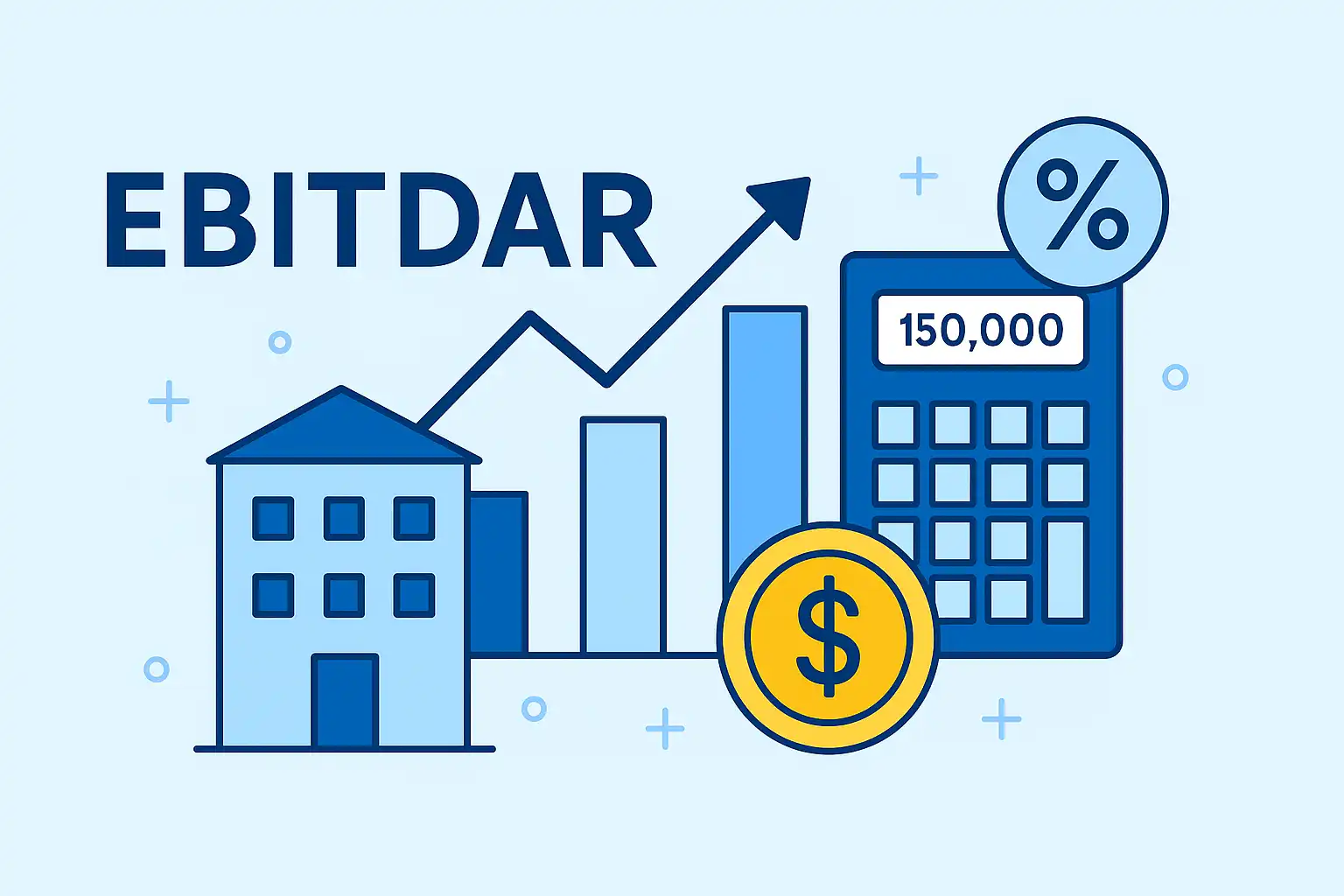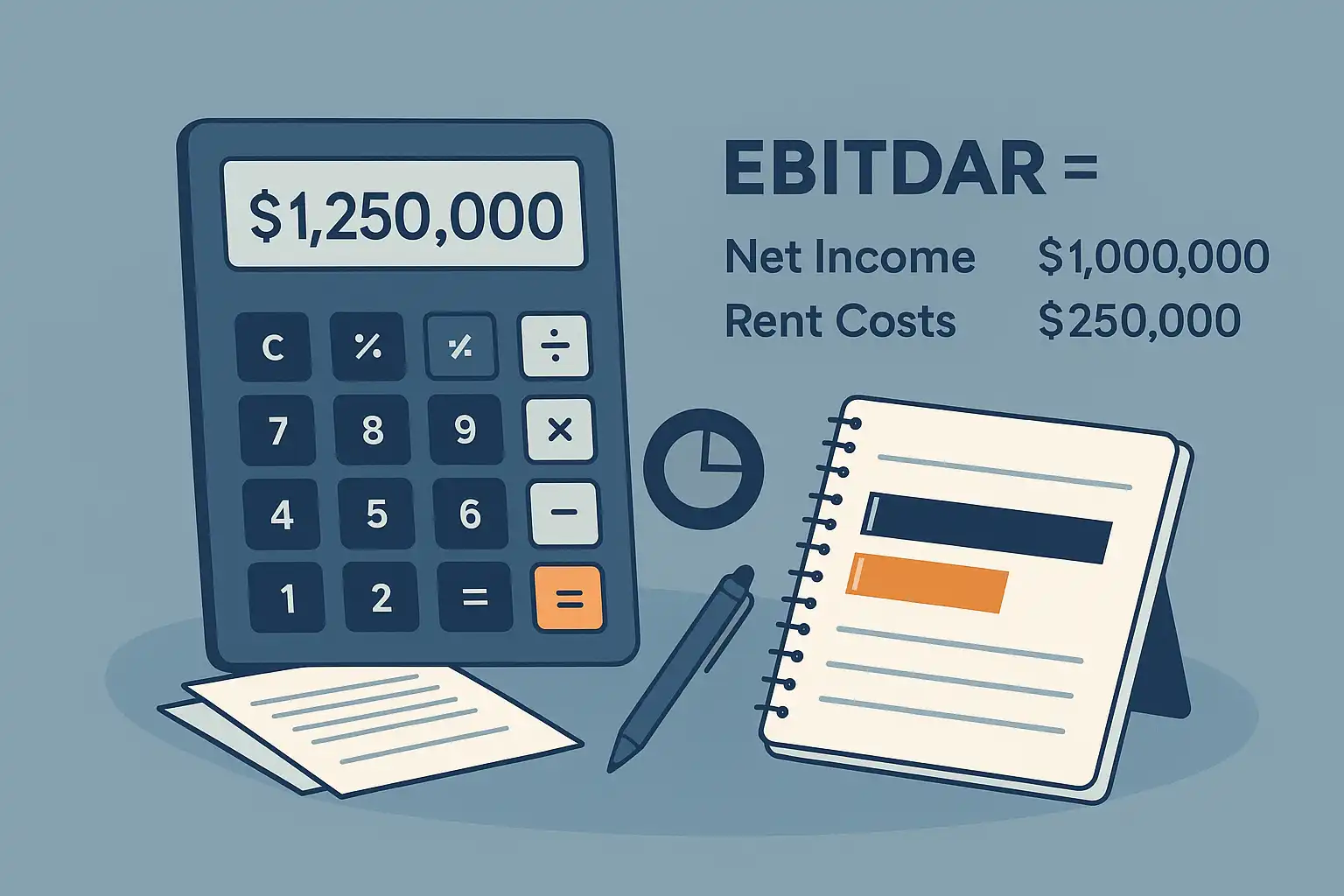EBITDAR: A Hotelier Guide to Understanding Profitability
 Mika Takahashi
Mika Takahashi Mika Takahashi
Mika TakahashiWhen you’re comparing companies across different industries, traditional financial metrics don’t always tell the full story. This is especially true for businesses that face hefty rent costs or frequent restructuring expenses — factors that can really skew how we see their operational performance. That’s where EBITDAR comes in. It’s a handy financial metric that offers a clearer picture of a company’s core operations.
Whether you’re looking at hotel chains, airlines, or companies within the same sector, getting a solid grasp on EBITDAR can give you the edge you need in financial analysis. This guide will walk you through everything — from the basics of how to calculate EBITDAR to the more advanced ways it can be used.
EBITDAR stands for Earnings Before Interest, Taxes, Depreciation, Amortization, and Rent or Restructuring costs. It’s a non-GAAP metric designed to show a company’s core operational performance by setting aside expenses that can vary widely between businesses, even in the same industry.
Unlike the usual numbers you see on a company’s income statement, EBITDAR excludes rent costs and restructuring expenses — things that don’t always reflect how efficiently a business is running day to day. This makes it especially useful when you’re comparing companies with different capital structures or ownership setups.
EBITDAR is particularly popular in rent-heavy industries like hospitality, airlines, and retail. Since rent expenses can vary so much, removing them helps investors and analysts compare companies on a more even footing, regardless of whether they own or lease their assets.
For example, if you’re comparing two hotel chains, one that owns its properties and another that leases them, traditional metrics might make the property owner look more profitable just because of how the costs are recorded. EBITDAR cuts through that by zeroing in on operational performance, not financing decisions.

Knowing how to calculate EBITDAR is key for meaningful financial analysis. There are three main ways to get there, and they all lead to the same number if done right.
Start with net income from the income statement and add back these costs:
EBITDAR = Net Income + Interest + Taxes + Depreciation + Amortization + Rent/Restructuring Costs
This method walks you up from the bottom line to the operational performance by adding back each excluded cost.
If you already know EBITDA, just tack on rent or restructuring costs:
EBITDAR = EBITDA + Rent/Restructuring Costs
This is handy since EBITDA figures are often readily available in reports.
You can also begin with EBIT (earnings before interest and taxes) and add back depreciation, amortization, and rent or restructuring costs:
EBITDAR = EBIT + Depreciation + Amortization + Rent/Restructuring Costs
Each piece of the formula has a role:
Let’s put EBITDAR side by side with other common financial metrics to see when it’s best to use each:
| Metric | What It Excludes | Best For | Limitation |
|---|---|---|---|
| Net Income | None | Overall profitability | Includes all expenses |
| EBIT | Interest, Taxes | Operating profitability | Includes depreciation and rent |
| EBITDA | Interest, Taxes, Depreciation, Amortization | Approximating cash flow | Includes rent expenses |
| EBITDAR | Interest, Taxes, Depreciation, Amortization, Rent | Comparing operations across ownership types | May overlook actual cash costs |
EBITDA removes interest, taxes, depreciation, and amortization, while EBITDAR goes a step further by also excluding rent and restructuring costs. This makes EBITDAR especially useful when you’re looking at companies with high lease expenses or those undergoing significant restructuring.
Most companies stick with EBITDA unless rent costs make comparisons between similar businesses misleading.
EBIT includes depreciation, amortization, rent, and restructuring costs. EBITDAR removes those to focus on cash-generating operational activities.
While EBIT aligns with accounting principles and shows accounting profit, EBITDAR gives you a sharper look at the company’s core operations, independent of accounting choices or financing.

Some industries find EBITDAR especially valuable because of their unique cost structures.
The hotel industry is a classic example. Some hotels own their buildings, others lease them, and still others operate under franchise agreements. This leads to very different expenses on the income statement.
Hotels that lease properties show rental costs as operating expenses, while owners show depreciation. Without adjusting for this, comparing their financial performance is tricky.
EBITDAR helps by removing rent costs, letting analysts focus on operational efficiency regardless of ownership.
Imagine two hotels in the same city with similar revenues and operations. One owns its property, the other leases. Traditional metrics might make the owner look better off, but EBITDAR shows their actual operational performance is on par.
Airlines also benefit from EBITDAR analysis. Some own their aircraft, others lease them, which creates big differences in operating expenses.
Leases show up as rental costs, impacting profitability metrics. EBITDAR removes these to let you compare airlines on how well they run their operations, not how they finance their fleets.
For example, Southwest Airlines has traditionally owned much of its fleet, while Spirit Airlines leases a lot of theirs. EBITDAR lets analysts compare their operational efficiency without the noise of financing differences.
EBITDAR shines in certain situations:
Let’s look at a simple example with Company ABC’s 2024 numbers:
Step-by-step:
Start with net income: $750,000
Add interest: +$150,000
Add taxes: +$200,000
Add depreciation: +$100,000
Add amortization: +$50,000
Add rent: +$300,000
Total EBITDAR = $1,550,000
To see how operationally efficient the company is, calculate the EBITDAR margin:
EBITDAR Margin = EBITDAR ÷ Revenue = $1,550,000 ÷ $5,000,000 = 31%
That means for every dollar of revenue, Company ABC earns 31 cents from its core operations before financing, taxes, and asset costs.
EBITDAR margins often line up with EBITDA benchmarks but tend to be a bit higher since rent and restructuring costs are excluded.
These benchmarks help you gauge if a company is performing well within its industry.
EBITDAR offers several perks:
Private equity firms and acquirers also rely on EBITDAR to spot operational improvements and true earning potential beyond current capital structures.
While useful, EBITDAR isn’t perfect:
Remember, EBITDAR excludes real cash expenses like rent and interest, so it shouldn’t be mistaken for actual cash flow. Always pair EBITDAR with balance sheet and cash flow analysis to get the full financial picture.
Want to improve EBITDAR? Here are some smart moves:
Analysts and investors use EBITDAR in many ways:
Mastering EBITDAR gives you a powerful tool to see through the noise of different business models and capital structures. Use it wisely alongside other financial metrics to make smarter investment and management decisions.
When used properly, EBITDAR helps you understand the real operational health of complex, asset-heavy businesses — whether you’re investing, benchmarking, or strategizing for growth.